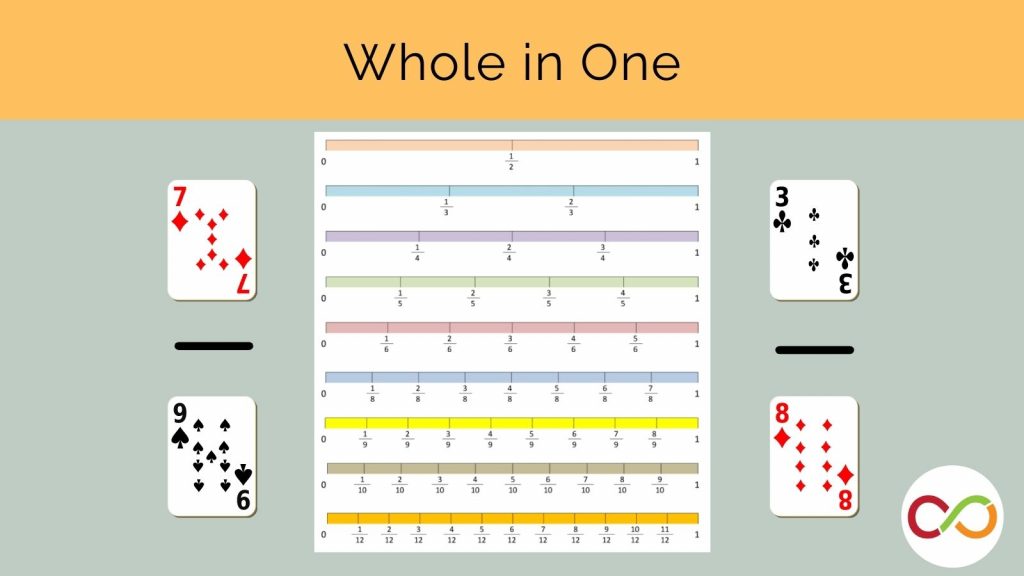Fraction Bump
Primary/Junior (Age 6 – 12)
Curriculum Goal
Primary: Number Sense
- Represent and solve problems that focus on determining and using equivalent fractions, including problems that involve halves, fourths, eighths; thirds and sixths; and fifths and tenths.
Junior: Number Sense
- Represent equivalent fractions using appropriate tools, in various contexts.
- Describe relationships and show equivalences among fractions using appropriate tools and drawings, in various contexts.
Context
- Two to four students in-person, or on a video conference chat.
- Students should have prior experience with simple fractions and have an understanding of equivalent fractions.
Materials
In-person version
- Gameboard (Appendix A)
- Fraction dice – to be made beforehand (Appendix B)
- Game pieces – two different colours, one colour per child (20 pieces per child)
Online version
- Game file (Playingcards.io upload instructions)
- Online manipulatives to help students determine equivalent fractions, if necessary.
Lesson
- The goal of the game is to lock in as many fraction models on the gameboard as possible by the end of the game.
- Each player takes a turn at rolling the die (or, if playing online, pulling a card) and places a game piece on a fraction model that is equivalent to the fraction they rolled/pulled. For example, if the player rolls a 5/10, they can place a piece on the 1/2 or 3/6 models.
- If there is another game piece on the fraction model already, there are two options:
- If it is the player’s own piece, they can place a second game piece and lock in that fraction model, meaning it can no longer be bumped.
- If it is the opponent’s game piece, the player can bump off that piece and replace it with their own. The opponent takes back their piece.
- The game ends once all the fractions models are locked in (with two same-coloured game pieces). The player with the most locked-in models wins.
Look Fors
- Can children use appropriate math language when describing fractions? (i.e. 2/6 = “two-sixths” or “one-third”)
- What strategies do children implement to determine the magnitude of the fraction compared to the fraction models on the game board?
- Can children recognize equivalent fractions? (i.e. 2/6 = 1/3)
- Which fraction models commonly seem to cause confusion and/or lead to difficulty for students?
Extension
- Each player has to name an additional equivalent fraction before they can add a second game piece to lock in a fraction model.
- Integrate improper fractions into the game.
- Create a fraction dice or fraction cards with adding, multiplying, or dividing fractions. For example, create a fraction card with the equation “1/2 + 1/3”. Players would solve the problem first and then find the sum on the Fraction Bump gameboard. In this case, the player would look for an equivalent fraction of “5/6” on the gameboard. Similarly, fraction dice or cards could be created that require the multiplication or division of fraction.
Created by Sara Pijanowski. Adapted by The Robertson Program.
Share this lesson
Share on facebook
Share on twitter
Share on email

